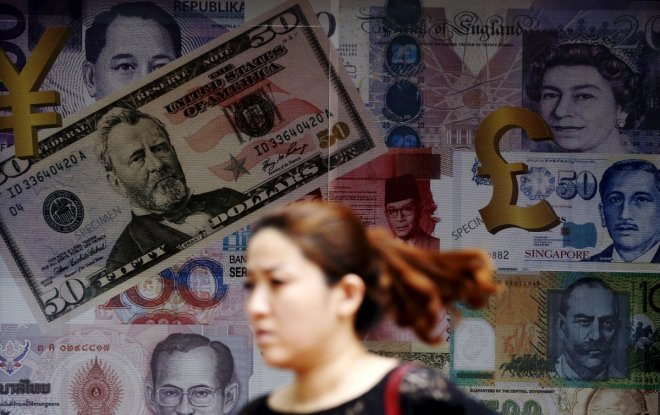
The Bank Negara Malaysia kept its policy rate unchanged at the review on Thursday (March 2) as it is not expecting the growth momentum to be sustained this year while cost-driven inflation is not likely to have major impact on the broader price trends.
The overnight policy rate (OPR) is held at 3%. Malaysia had been on a tightening cycle for about 5 years from 2000, taking the benchmark interest rate to 3.25% from 2%, and the reversal has started with a 25 basis points cut last July.
"The cost-driven inflation is not expected to have a significant impact on the broader price trends given the stable domestic demand conditions. Core inflation is expected to increase modestly," the bank said.
The Malaysian ringgit weakened against the US dollar after the BNM rate decision while the FX markets were also under the influence of a rallying greenback broadly.
"The ringgit, along with other emerging market currencies, has continued to stabilise," the Bank said in its statement.
The BNM said it the growth momentum in Malaysia is expected to be sustained in 2017 helped by more positive contribution from the external contribution while the growth of domestic demand will be sustained.
The central bank said headline inflation in the country would remain relatively high in the first half of the year but will moderate thereafter. Core inflation is expected to increase modestly, it said.
The Malaysian ringgit continued to slide on Thursday. USD/MYR rose to 4.4510 from the previous close of 4.4470, translating to 0.08% decline in the ringgit on the day and adding up the weakness so far this week to 0.23%.
Against the Singapore dollar, the Malaysian currency strengthened to 3.1496 from the previous close of 3.1596 and further distancing from Tuesday's 3.1780, which was the ringgit's weakest level in the history against the Singdollar.
From the statement
Economic activity in the advanced and emerging economies has continued to improve. Global trade is also showing a recovery. In this environment, the Asian economies are benefiting from stronger external demand amid sustained domestic activity.
For 2017, the global economy is projected to expand at a slightly faster pace. Nevertheless, there remain risks to global growth arising from threats such as protectionism, geopolitical developments, heightened volatility of financial markets and negative developments in the prices of key commodities.
Malaysian GDP
Despite the challenging global and domestic environment, the Malaysian economy expanded by 4.2% in 2016. Growth was underpinned by private sector activity, with additional support from the turnaround in net exports.
The growth momentum is expected to be sustained in 2017. With the growth of domestic demand being sustained, the more positive contribution from the external sector will lead to a better performance of the Malaysian economy.
Inflation
Headline inflation is projected to be higher in 2017, reflecting primarily the pass-through impact of the increase in global oil prices on domestic retail fuel prices. Headline inflation would remain relatively high in the first half of the year before moderating thereafter.
However, the projected trajectory of domestic headline inflation will be dependent on the future trend in global oil prices which remains highly uncertain.
The cost-driven inflation is not expected to have a significant impact on the broader price trends given the stable domestic demand conditions. Core inflation is expected to increase modestly.
Ringgit
The ringgit, along with other emerging market currencies, has continued to stabilise. The implementation of financial market development measures has had a positive impact on the domestic financial markets.
Banking system liquidity remains sufficient. Financial institutions continue to operate with strong capital and liquidity buffers and the growth of financing to the private sector is consistent with the pace of economic activity.
At the current level of the OPR, the stance of monetary policy is accommodative and supportive of economic activity. The MPC will continue to assess the balance of risks surrounding the outlook for domestic growth and inflation.









